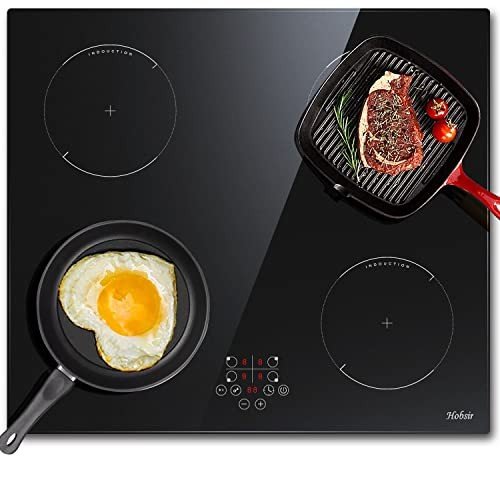Understanding Kitchen Ovens and Hobs: A Comprehensive Guide
The kitchen is often described as the heart of the home, and for good factor. It is where families come together, meals are prepared, and memories are developed. Central to this cooking haven are 2 essential devices: the kitchen oven and the hob. Understanding their features, types, and performances is important for efficient cooking and can considerably improve a home chef's experience. This post will look into the world of kitchen ovens and hobs, examining their various types, advantages, and tips for making informed options.
Table of Contents
- Intro to Kitchen Ovens
- Types of Ovens
- Standard Ovens
- Convection Ovens
- Microwave Ovens
- Steam Ovens
- Understanding Hobs
- Types of Hobs
- Gas Hobs
- Electric Hobs
- Induction Hobs
- Advantages of Using Ovens and Hobs
- Picking the Right Oven and Hob for Your Kitchen
- Maintenance Tips for Ovens and Hobs
- FAQs
- Conclusion
1. Intro to Kitchen Ovens
Ovens are indispensable appliances in modern kitchen areas. They supply a controlled environment for baking, roasting, and broiling food. With numerous designs and functionalities, choosing the right oven can considerably impact cooking times, food texture, and flavor.
2. Types of Ovens
Standard Ovens
Conventional ovens are the most typical type found in homes. They utilize either electric or gas power to heat up the interior and generally feature a single cooking space.
Advantages:
- Versatile for baking, roasting, and broiling.
- Usually inexpensive.
Convection Ovens
Convection ovens are similar to standard ovens however come geared up with a fan that distributes hot air throughout the cooking chamber. Ovens Online leads to even cooking and browning.
Advantages:
- Reduced cooking times due to improved air flow.
- Enhanced browning and crisping of foods.
Microwave Ovens
Microwave ovens use electromagnetic radiation to heat food quickly, making them convenient for defrosting and reheating leftovers.
Advantages:
- Very fast cooking times.
- Energy effective.
Steam Ovens
Steam ovens make use of steam to prepare, preserving the moisture and nutrients in food. They are especially popular among health-conscious cooks.
Benefits:
- Healthier cooking alternative.
- Retains minerals and vitamins in food.
3. Understanding Hobs
Hobs, likewise known as cooktops, are the flat surfaces on which pots and pans are positioned to cook food. They can be integrated into kitchen countertops and are offered in numerous designs, fuel types, and styles.
4. Kinds of Hobs
Gas Hobs
Gas hobs use burner as their heat source, using instantaneous heat and accurate temperature control.
Benefits:
- Excellent control over cooking heat.
- Usually cheaper to run than electric ones.
Electric Hobs
Electric hobs heat using electric coils or glass surface areas. They might take longer to warm up than gas, however they provide a smooth cooking surface area and are easier to clean up.
Benefits:
- Even heat distribution.
- Safe, as there's no open flame.
Induction Hobs
Induction hobs utilize electro-magnetic energy to directly warm pots and pans. They need compatible cookware and offer instant responsiveness.
Benefits:
- Highly energy-efficient.
- Faster cooking times and precise temperature control.
5. Benefits of Using Ovens and Hobs
Both ovens and hobs featured their own unique set of benefits that can improve any cooking experience. Here are a few crucial benefits:
- Diverse Cooking Options: Both devices permit a series of cooking methods including boiling, frying, roasting, baking, and steaming.
- Time Efficiency: Modern ovens and hobs frequently feature quick cooking settings, which conserve time in the kitchen.
- Precision Cooking: With innovative functions, users can achieve much better lead to temperature control and cooking times.
6. Choosing the Right Oven and Hob for Your Kitchen
When selecting the right oven and hob, various aspects need to be considered:
- Size: Ensure that the device fits comfortably in your kitchen area.
- Cooking Style: Consider what kinds of food you often prepare.
- Fuel Type: Whether gas or electric, consider schedule and effectiveness in your area.
- Spending plan: Determine your spending plan and find appliances that fulfill your requirements within that range.
Checklist for Choosing Your Oven and Hob:
- Assess kitchen space.
- Determine your cooking preferences.
- Determine power source availability.
- Compare functions and specifications.
- Set a spending plan range.
7. Upkeep Tips for Ovens and Hobs
Regular maintenance is important for keeping ovens and hobs in ideal condition. Here are some maintenance ideas:
- Clean Regularly: Wipe down surface areas after each usage and deep clean periodically.
- Examine Seals: For ovens, inspect door seals to ensure they are airtight.
- Take a look at Burners: For gas hobs, keep burners without food debris to keep reliable heating.
- Replace Filters: If your oven has a filter, replace it as recommended by the producer.
8. FAQs
1. What is the distinction in between a conventional oven and a convection oven?Conventional ovens
cook food through glowing heat, while stove distribute hot air, resulting in much faster and more even cooking. 2. Do induction hobs need special cookware?Yes,
induction hobs require ferrous pots and pans that can being allured to work successfully. 3. Are steam ovens worth the investment?For health-conscious people or those who frequently prepare vegetables and delicate foods, steam ovens can be worth the financial investment
due to their ability to keep nutrients. 4. Can I combine an oven and hob into one unit?Yes, numerous manufacturers offer combined units understood as range cookers, which incorporate both an oven
and hob into a single device. 9. Conclusion Kitchen ovens and hobs are important components of any cooking area, each offering special features and functionalities fit for numerous cooking styles.
By comprehending the
types of ovens and hobs offered, their benefits, and how to maintain them, home chefs can cultivate a more efficient and enjoyable cooking experience. Whether one is a seasoned cook or a novice, making notified choices about these important kitchen home appliances is crucial.

